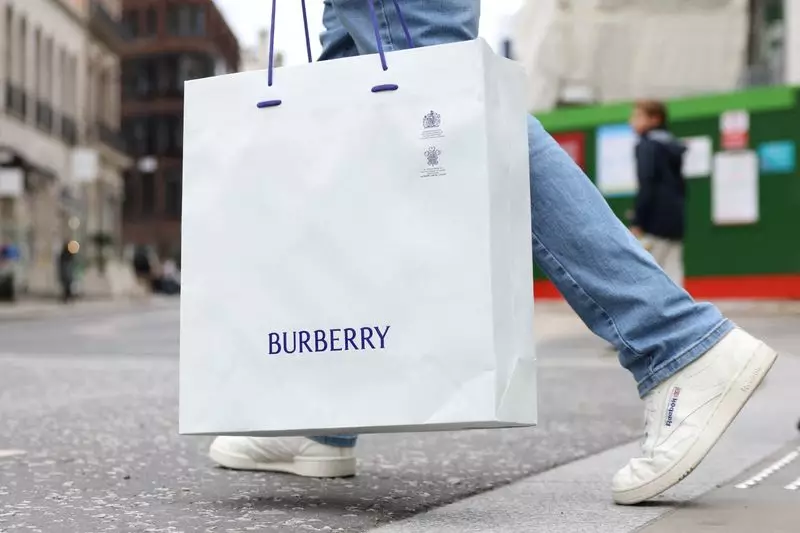In a significant update on its financial performance, Burberry, the esteemed British luxury fashion house, reported a lesser-than-expected decline of 4% in quarterly comparable store sales. This announcement, made public on Friday, indicated a potential rebound fueled by favorable sales during the holiday season in the United States, suggesting a broader revitalization of consumer confidence in the luxury segment. The response from the market was notably positive; Burberry’s shares surged by 12%, a clear indication that investor sentiment is leaning towards optimism regarding the brand’s recovery.
Joshua Schulman, who took on the role of CEO just six months prior amidst a challenging environment, articulated a strategic pivot aimed at re-engaging Burberry’s customer base. By spotlighting iconic products—specifically the brand’s famed trench coats and cashmere scarves—instead of diversifying into less recognizable offerings, Schulman’s approach aims to restore brand desirability. This strategic focus is evident, reflecting a calculated move to win back consumers who had previously turned away due to the brand’s premium pricing and unclear product identity. According to Schulman, December marked a critical milestone with noted new customer acquisition, a significant development after a two-year period of stagnation in brand allure.
Breaking down the sales performance by region reveals a mixed but overall positive outlook. In the Americas, sales improved by 4%, buoyed by a refurbished store on New York’s 57th Street that showcased high-end outerwear. This aligns with Luxurynsight data indicating that Burberry has strategically elevated the pricing of its premium products in the U.S. market. Meanwhile, sales in the Asia Pacific region experienced a decline of 9%, but this represents an improvement from a staggering 28% drop in the preceding quarter. European markets also contributed to a more optimistic picture, with sales only down by 2% compared to 10% in the previous assessment.
Burberry’s CFO, Kate Ferry, shed light on recent markdown initiatives, indicating that discounted offerings during December have played a significant role in improving sales figures while still observing encouraging trends in full-price sales. Union with broader industry trends, analysts from Citi are hopeful that the uptick in performance from other luxury brands—like Richemont and Brunello Cucinelli—signals a turnaround in the luxury retail sector. Notably, the signs of stabilizing demand in China, a pivotal market for Burberry, suggest that the potential for recovery is not merely confined to the West.
Despite reporting a decline in retail revenue from £706 million to £659 million year-over-year for the third quarter, the narrative emerging from Burberry is not one of despair but of cautious optimism. As the company prepares to unveil its Autumn/Winter 2025 collection at London Fashion Week, the anticipation builds around how it will further capitalize on its crown jewels—the trench coats and scarves that have long defined its brand identity. The expectations are now shaped by a promising trajectory towards profitability, supported by a renewed focus on core product lines and the reclamation of consumer interest.
In essence, Burberry’s recent performances underline a well-strategized recalibration aimed at fortifying its market position and rekindling affection from its customer base, setting the stage for what could be a pivotal year ahead in luxury apparel.

